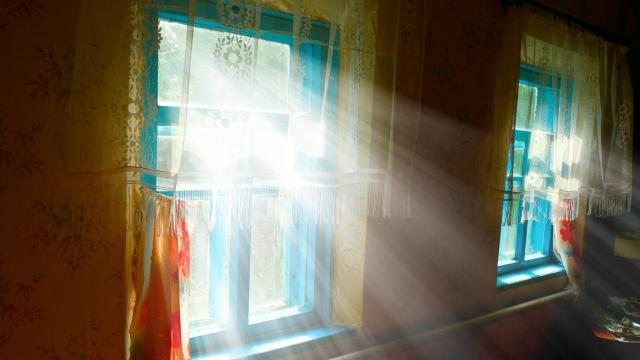It’s easy to underestimate the amount of heat generated by sunlight streaming into your windows. Even if your home is well-insulated, intruding sunlight can cause the indoor temperature to skyrocket — and your energy bills too, if you’re using air conditioning to stay cool. Fortunately, the right choice of window treatments can go a long way toward mitigating both of these summertime struggles.
Custom-cut insulated shades are a great solution
One way to help cut down on heat intrusion into your home is to install insulated shades, also known as cellular shades, on the widows that get the most punishing sun exposure. These shades, which have insulated iterior air pockets and typically fold up like an accordion, both reflect heat from sunlight and insulate against general environmental heat. They are generally cut to fit your windows and are relatively simple to install yourself. Expect to pay around $US50 ($69) per window or more.
Other interior window coverings can be more cost-effective
More cost-effective options for interior window coverings may include roller shades, blinds, and insulating drapes. Any of these options will shade out some of sunlight and cut down on the interior heat it produces. Used in conjunction with another light-blocking method, they can will significantly reduce the amount of ambient heat entering your home.
Install reflective film to keep sunlight out
Another option to improve efficiency is to use a reflective film that attaches to the window itself (covering one large window will run you around $US30 ($42)). These will come with a SGHC (solar heat gain coefficient) rating that will tell you how good they are at reducing heat — the lower the number, the more effective the film. These can be a good option if you want to add some heat reduction to your windows without totally blocking your visibility..
Temporary insulation will be unsightly but effective
For a temporary solution — say, if you’re hit by an unseasonable heat wave — you can use reflective insulation to keep the sun from heating up your house. Cut the material from the roll to fit your window opening and install using temporary caulk or removable tape. While this isn’t the most attractive option, it might keep you cool in a crunch, and it will certainly lower your energy costs.
Install exterior heat transfer barriers
Exterior options to reduce heat transfer from sunlight include shutters, exterior shades, and awnings. These will all help reduce direct sunlight and therefore slow down heat transfer, but they will also affect the look of your home’s exterior. In addition, shutters and shades, unless automated, will need to be operated from the outside, so they can be cumbersome. Awnings need to be vented to keep hot air from building up in the upper part of the structure, so small ventilation holes should be present in the top edge of the material.
Go high-tech with automated solar shades
Automated solar shades are a costly but increasingly popular option for heat protection for your windows. They can be installed on the outside or inside of your home and are designed to reduce heat transfer. They can often be programmed or operated from a smartphone so you can control them remotely, allowing you to adjust your heat protection during the warmest parts of the day, even when you’re not home.

Leave a Reply
You must be logged in to post a comment.